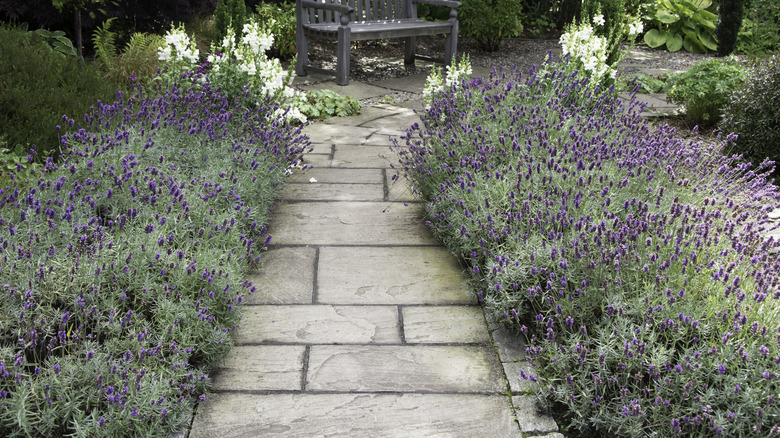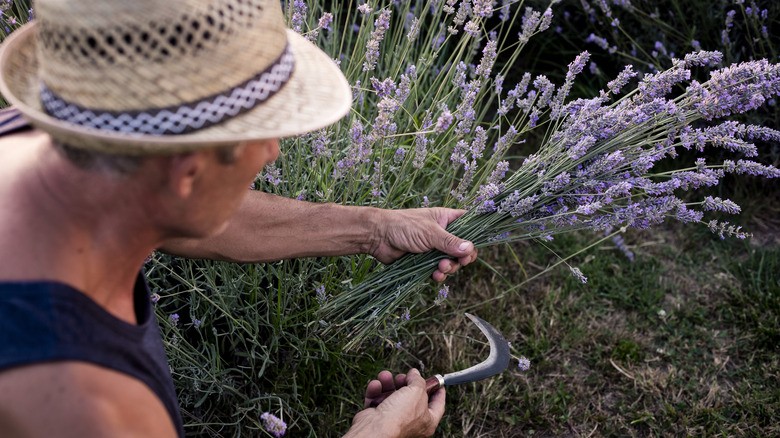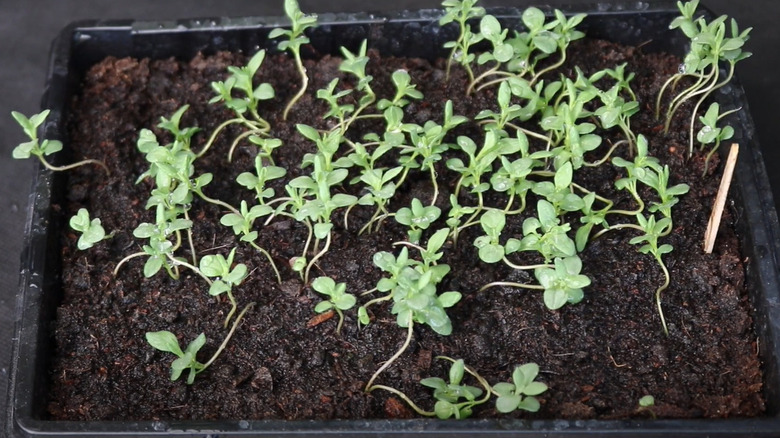How To Grow Free Lavender For Your Garden By Harvesting Your Own Seeds
Ah, that moment you step into your garden and are immediately hit with a wave of lavender goodness. The purple color's popping, and the scent? It's like nature's own aromatherapy session with every little breeze. It's not just a visual and olfactory delight. The herb adds a fancy twist to a plethora of dishes and drinks, wards off unwanted insects, and draws pollinators to your garden. If you're thinking about planting lavender in your garden, there's no need to stick to the same old cuttings routine. Shake things up and start from the ground up — we're talking about seeds. Begin by snagging some flower stalks and letting them dry out. After this, extract the seeds, stash them away, and then, later, pull off a little trick called stratification to wake them up and get them pumped to sprout.
Now, for the catch. Lavender seeds have a notoriously low germination rate, with the entire process from sowing to transplanting spanning three months up to half a year. Speaking of growing conditions, this gem prospers in well-drained, sandy loams to rocky soil with just the right pH balance (6.5 to 7.5). And here's the best part: Lavender's versatility knows no bounds. It's perfectly at home in USDA zones 5 to 10, whether you're lining those garden paths or setting up a hedge or mass-planted pollinator garden. Treat it nice, and you're looking at a decade or more of elegance, protection, and soothing aroma in your garden.
How to harvest and store lavender seeds for future sowing
The best time to harvest lavender? Summer is the golden hour when the blooms burst open. On the very day, hold your horses until the morning dew lifts and the air is a bit cool. Why? You want to lock in those precious but volatile oils that make lavender so awesome. Now, grab sharp pruning shears or scissors and get to clipping those flower stalks. Once you've got a good handful, give each a little shake on your palm to knock off little bugs lodging within.
Next, put the flower stalks in several bundles, each secured tightly with a rubber band or twine. Then, it's time to air-dry them. Flip those bundles upside down, tuck them into a brown paper bag, and hang them up somewhere for about two weeks. If paper bags aren't your thing, just hang the bundles as they are in a dark, warm place.
When it's crunch time (literally), the flower heads should feel crisp to the touch. Take a white paper, gently rub the dried flower heads over it, and just like that — tiny black seeds will scatter out. Your next mission is to scout out a new home spot for these little gems. A mason jar or envelope marked with the type of lavender you harvested will do the trick. Tuck these away in a cool, dry, and dark place (just don't let the seeds sit too long before sowing them).
How to grow lavender from seeds
Starting lavender from seeds kicks off with cold stratification for stronger germination and faster sprouting. Simply put, pop those little seeds into a plastic bag with some moist peat moss and stash it in your fridge for about a month. After this, load a seed-starter tray up with a good seed starting mix (like Miracle-Gro's for $6.98 at Lowe's), and lightly press your chilled seeds. Cover your soon-to-be baby saplings with a clear lid and place the setup somewhere warm — aim for 70 degrees Fahrenheit.
Hang tight for a bit, for these gems sprout between one and three weeks. Next, whip the lid off and scoot the tray over to a sunny window spot or switch on grow lights. Your mission now is to keep the soil damp and warm. When your seedlings sport two sets of leaves, move them into individual pots with their root balls, but not without giving them a gentle watering first.
Wait until the lavender saplings are standing about 3 inches tall to prime them for the outdoors. Start with some shade and then play a game of gradual sunshine. Come April or May, move the young lavenders outside in a well-drained, weed-free, and sunny spot, scattering them 3 feet apart. Get into a watering groove (think a gallon per plant weekly) until the transplants settle in your garden. Finally, among the mistakes to avoid when growing lavender are failing to prune annually and overlooking pests and diseases.


